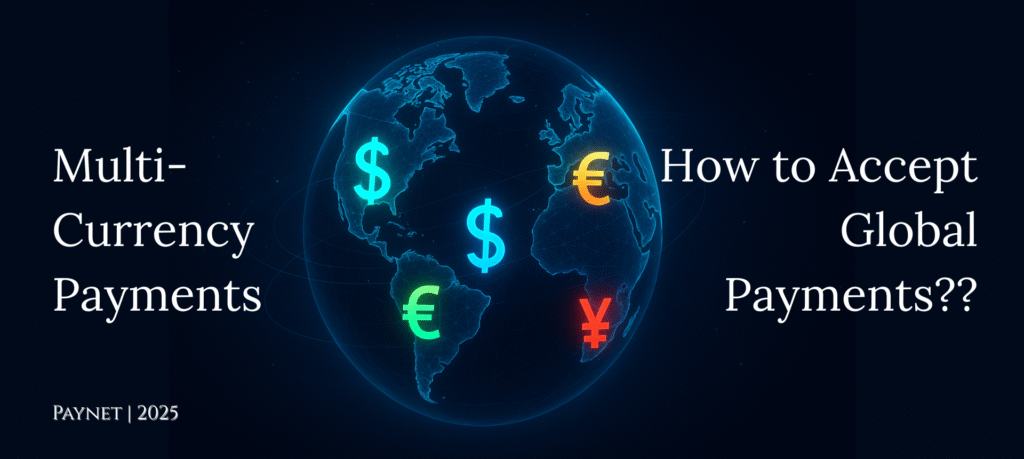User Behavior in Digital Wallet Usage: Insights That Are Shaping the Future of Digital Payments – [Cloned #1447]
Home UPI Growth and Adoption Insights: How India’s Favorite Payment System Is Shaping the Future of Finance Explore UPI growth...

Learn how multi-currency payment gateways work, their benefits, and how to choose the best solution for international sales.
Expanding your business globally? Over 55% of online shoppers prefer paying in their local currency, and 30% abandon carts if pricing appears in foreign money. A multi-currency payment gateway helps you capture international sales by accepting payments in USD, EUR, GBP, and more—without losing money to high forex fees.
This guide explains how multi-currency gateways work, their benefits, and how to choose the best one for cross-border commerce.
A payment gateway that:
✅ Accepts payments in multiple currencies (USD, EUR, JPY, etc.)
✅ Settles funds in local or preferred currency
✅ Supports dynamic currency conversion (DCC) (optional)
Example:
A customer in Germany pays in EUR → Funds settle in your USD account (with auto-conversion).
✔ Higher Conversion Rates
66% of shoppers more likely to buy when priced in their currency.
Avoid “sticker shock” from unexpected forex rates.
✔ Reduced FX Costs
Save 2-4% per transaction vs. traditional bank conversions.
Lock in competitive exchange rates with wholesale pricing.
✔ Simplified Accounting
Receive settlements in a single currency (if preferred).
Automated multi-currency reconciliation.
✔ Localized Customer Experience
Show prices in local currency at checkout.
Accept popular regional methods (Alipay, iDEAL, UPI).
Step 1: Currency Selection
Customer sees prices in their local currency (via geo-IP or manual selection).
Step 2: Payment Processing
Gateway converts currency in real-time (if DCC enabled).
Processes via local acquiring banks for higher approval rates.
Step 3: Settlement
Funds converted to your base currency (or held in original currency).
|
Provider
|
Supported Currency
|
FX Fees
|
Best for
|
|---|---|---|---|
|
Paypal
|
25+
|
3-4%
|
Small Business
|
|
Stripe
|
135+
|
1-2%
|
SaaS , Subscriptions
|
|
Paynet Global
|
50+
|
0.5-1.5%
|
High Volume Sales
|
|
Adyen
|
120+
|
1-2%
|
Enterprise e-commerce
|
What It Is:
Lets customers pay in their currency while you receive funds in yours.
✅ Pros:
Improves transparency (no surprise bank conversion fees).
Boosts conversions by 10-15%.
❌ Cons:
Markup risk (some gateways add 1-3% to rates).
Requires clear disclosure to avoid customer disputes.
Best Practice: Offer DCC as opt-in, not default.
❌ Cross-border fees (up to 1.5% extra)
❌ Monthly minimums for currency accounts
❌ Poor forex rates (compare against mid-market rates)
Tip: Negotiate interchange-plus pricing for transparency.
Step 1: Choose a Gateway
Prioritize local acquiring in target markets.
Step 2: Configure Currency Rules
Set auto-conversion thresholds.
Enable multi-currency wallets (if holding foreign cash).
Step 3: Optimize Checkout
Display localized pricing (e.g., “€49.00 (≈$53)”).
Offer preferred payment methods (e.g., Alipay for China).
🚀 CBDCs (Central Bank Digital Currencies)
Digital Dollar, e-Euro, e-Rupee will streamline FX.
🚀 Blockchain-Based Settlements
Stablecoins (USDC, USDT) for near-instant, low-cost FX.
🚀 AI-Powered FX Hedging
Auto-lock best exchange rates for future settlements.
Home UPI Growth and Adoption Insights: How India’s Favorite Payment System Is Shaping the Future of Finance Explore UPI growth...
Home User Behavior in Digital Wallet Usage: Insights That Are Shaping the Future of Digital Payments Explore changing user behavior...
Home New Features in UPI and Mobile Wallets 2025: Smarter, Safer & More Seamless Than Ever Explore the latest features...